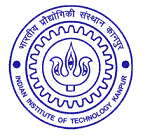News & Events
Dr. A. Chatterjee (Co-ordinator, CAD Lab) is honoured by the Venus International Foundation as the OUTSTANDING RESEARCHER AWARD in the category of (Engineering / Computer) of the of VIFFA 2015
Dr. A. Chatterjee (Co-ordinator, CAD Lab) is honoured by the National Forum of Design & Analysis
Dr. A. Chatterjee of our Department has been invited by the National Forum for Analysis to join their council.
Dr K.Ramachandra, Director GTRE is the Convener of the forum. As a (Honorary) council member,
Dr. Chatterjee will advise the Forum to formulate plans for Quality enhancement in the usage of various CAD/CAE/VR tools Regular networking with NAFEMS and other peer groups from various parts of the world.
Establish procedures for international recognition for CAE related qualification of Indian students. (August 2006)
Seminar on "Reverse Engineering using Digital Non-Contact Optical Scanning & Digitising"
A Seminar on "Reverse Engineering using Digital Non-Contact Optical Scanning & Digitising" was held at IIT Kanpur on 31st August, 2001.
The Seminar was organized by IIT Kanpur and Gom International AG/APM Technologies.
The keynote Address on Reverse Engineering was given by Dr. S. G. Dhande - Professor, Department of Mechanical Engineering, IIT Kanpur.
Digital Non-Contact Scanning presentation was given by Dr. Ernst Mueller - Director GOM International AG, Switzerland
The1st international symposium on Rapid Prototyping and Tooling RPSI, Bangalore India , June 06-07, 2003
The following five papers authored by our lab mates have been presented in the conference.
An approach to direct prototyping of point sample models, G. Saravana KUMAR
Biomodeling and finite element analysis of clubfoot corrective procedure in newborn babies, M.L. JAIN
Prototyping heritage using digital technology, Dr. A. Chatterjee
Rapid prototyping for supersonic bluff bodies, K. Siva Prasad
Reuse of FDM models by solution casting technique, K. Siva Prasad
2003 Congress of Evolutionary Computation Canberra, Australia, 8th - 12th December 2003
A paper by G. Saravana Kumar, Parameter Optimization for B-spline Curve Fitting using Genetic Algorithms, was presented in the conference
18th American society of Composites (ASC) Technical Conference 2003 Gainesville, Florida, Oct. 20-22, 2003.
A Paper by Mukul Shukla, "Design of Experiments based Investigation of the Final Geometry of Autoclaved Composite parts", was presented in the conference.
1st International Conference on Advanced Research in Virtual and Rapid Prototyping, Leiria, Portugal, October 1-4, 2003.
A paper by G. Saravana Kumar, Direct Layered Manufacturing of Point Sampled Geometry, was presented in the conference.
Saddlery Sub-Sector Development Program
The leather industry occupies a place of prominence in the Indian economy in view of its massive potential for employment, growth and exports. There has been an increasing emphasis on its planned development, aimed at optimum utilization of available raw materials for maximizing the returns, particularly from exports. The exports of leather and leather products gained momentum during the past two decades. There has been a phenomenal growth in exports from Rs.320 million in the year 1965-66 to Rs.69558 million in 1996-97. Indian leather industry today has attained well-merited recognition in international markets besides occupying a prominent place among the top seven foreign exchange earners of the country.
Apart from a significant foreign exchange earner, leather industry has tremendous potential for employment generation. Direct and indirect employment of the industry is around 2 million. The skilled and semi-skilled workers constitute nearly 50% of the total work force. The estimated employment in different sectors of leather industry is as follows:
Sector Total Employment
Flaying, curing & Carcass Recovery 8,00,000
Tanning & Finishing 1,25,000
Full Shoe 1,75,000
Shoe Uppers 75,000
Chappals & Sandals 4,50,000
Leather Goods & Garments 1,50,000
In CAD laboratory of Indian Institute of Technology, Kanpur, India, the development of saddle and saddle tree began in early 2000 by using the techniques of rapid prototyping, rapid tooling and reverse engineering.
The CAD/CAM in product design and development enables to integrate different activities through seamless data transfer. It also compresses the design cycle time which is an important factor in competitive market. Besides that Reverse Engineering and Rapid Prototyping as a newer technology have a greater role to play than conventional manufacturing, which is all about this paper. Although we know that rapid prototyping is "rapid" but how rapid is it and how it's rapidity helps today's manufacturing? The product development process in this paper answers those questions and also it proves that in this particular case following benefits are obtained over conventional manufacturing.
1) Present Polymer saddle are injection molded compared to traditional hand crafted wooden saddle ( in our country) and hence there is no
material waste or scrap
2) As the present saddle tree is made with the help of CAD/CAM techniques, the number of prototypes requires to just one, compared to certain
finite number depending on the skill set of the craftsmen.
3) There is absolutely no rework required as the standardization is very high in this case.
4) Traditional saddle tree manufacturing took around 6 months but with this technology, it takes less than a month.
5) The present methodology leads to a product which conforms to international quality standard.
While making sustained endeavors to establish itself in the comity of world-fame institutions of teaching and training in the respective arena, the institute is committed to serving the saddlery segment as well as various other segments of the leather industry by providing technically competent professionals through world-class R&D. The institute also commits itself to achieving this through continual improvement in the Quality Management Systems and benchmarking the global standards of the leather industry.
Located in the newly developed Industrial Area, called Leather Technology Park, Banthar, Unnao (very close to Jajmau, the hub of leather industry in Kanpur) on the Lucknow-Kanpur National Highway, the Institute promises to become the One- Stop Solution to not only the saddlery industry but also the other segments of leather industry, like, footwear, leather goods, leather garments et al.
All Rights Reserved By: CAD LAB Indian Institute of Technology, Kanpur - INDIA
[This Website is designed & maintained by: Dr. A. Chatterjee]













